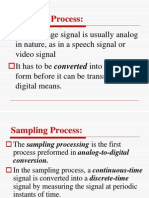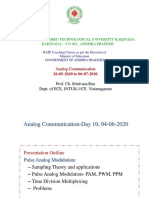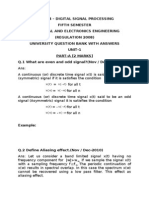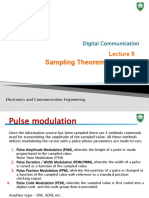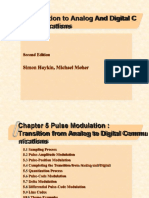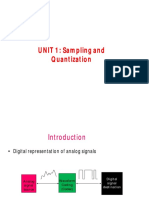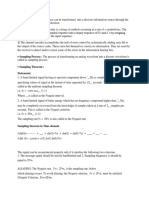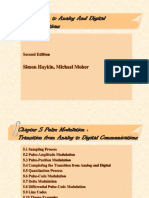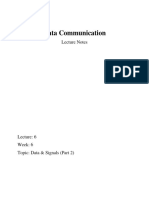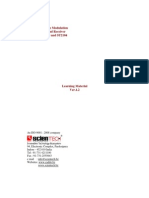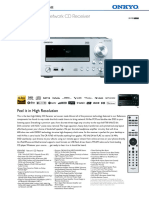0% found this document useful (0 votes)
57 views15 pagesUnit-IV-Pulse Modulation & Digital Modulation Modulation: Staff
1. Pulse amplitude modulation (PAM) is a type of pulse modulation where the amplitude of pulse carrier signals is varied in accordance with the modulating signal.
2. Sampling theorems state that a bandlimited signal can be reconstructed perfectly from its samples if the sampling frequency is greater than twice the maximum frequency of the signal based on the Nyquist criterion.
3. The mathematical representation of a sampled signal shows that its frequency domain spectrum consists of replicas of the original signal spectrum spaced at intervals of the sampling frequency, which can cause aliasing if the Nyquist criterion is not met.
Uploaded by
Gokul SaharCopyright
© © All Rights Reserved
We take content rights seriously. If you suspect this is your content, claim it here.
Available Formats
Download as PDF, TXT or read online on Scribd
0% found this document useful (0 votes)
57 views15 pagesUnit-IV-Pulse Modulation & Digital Modulation Modulation: Staff
1. Pulse amplitude modulation (PAM) is a type of pulse modulation where the amplitude of pulse carrier signals is varied in accordance with the modulating signal.
2. Sampling theorems state that a bandlimited signal can be reconstructed perfectly from its samples if the sampling frequency is greater than twice the maximum frequency of the signal based on the Nyquist criterion.
3. The mathematical representation of a sampled signal shows that its frequency domain spectrum consists of replicas of the original signal spectrum spaced at intervals of the sampling frequency, which can cause aliasing if the Nyquist criterion is not met.
Uploaded by
Gokul SaharCopyright
© © All Rights Reserved
We take content rights seriously. If you suspect this is your content, claim it here.
Available Formats
Download as PDF, TXT or read online on Scribd
/ 15




